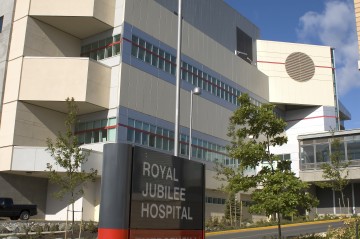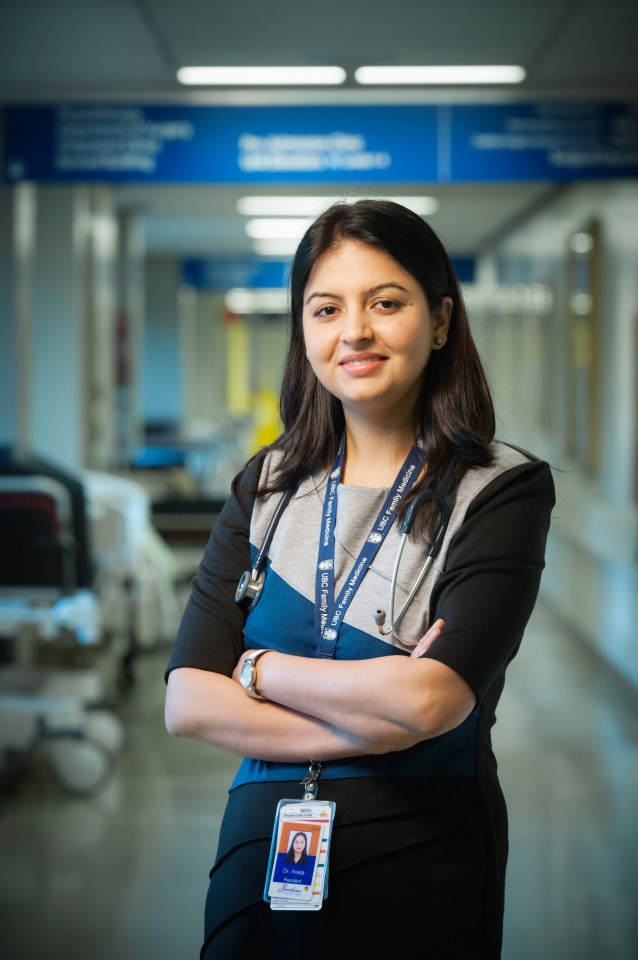As a practicing anesthesiologist in northern India, Kirti Aneja thought she had it all. Not only was she fulfilling her childhood ambition of becoming a doctor, but she was happily married to her medical school sweetheart and was expecting their first-born son.
But she and her husband then made a bold decision: They left their beloved homeland to pursue a better life for their children, and for a chance to use their medical skills in an entirely new setting — Canada.
Dr. Aneja is an international medical graduate (IMG), one of a group of permanent residents or Canadian citizens who were trained outside of North America and are now seeking to practise medicine in Canada.
To ensure a high level of care in communities around the province, the process of integrating skilled and passionate medical graduates from overseas is rigorous. While the U.S. and Canada share similar curricula and accreditation standards for medical students, systems vary widely around the world. Many do not, for example, demand the same level of training in a clinical setting that is required by Canadian medical education.
So all medical graduates trained outside of North America must complete a series of exams run by the Medical Council of Canada. Then, to enhance their likelihood of success when applying for a residency position, UBC offers a clinical assessment program, in which applicants work alongside experienced physicians in hospitals for two months. Those accepted into a residency position then spend another two to seven years in training, depending on their specialization, before they can qualify for a license to practice.
“I’m a fighter”
Dr. Aneja had completed three years of residency training in India. But here in Canada, she had to start over. While preparing for exams and looking after her young son, Dr. Aneja worked in Walmart to make ends meet.
“I’m a fighter,” she says. “We came here for a better life for our family and our son, and I don’t give up easily.”
Dr. Aneja passed all of her exams and the clinical assessment in two-and-a-half years. She began her residency in the southern Fraser Health region, including Langley Memorial Hospital and Surrey Memorial Hospital, in July 2012.
“I was determined to practise medicine in Canada, but it was definitely challenging,” says Dr. Aneja, whose husband is still in the process of qualifying for residency training.
Another international medical graduate, Suzanne Walter, took a very different route to her medical residency.
Raised in North Vancouver, she earned a BSc from UBC in 2000. While traveling in Europe, she decided to become a doctor, and enrolled in the University of Freiburg medical school, in Germany. After earning her M.D. there, she returned to Vancouver in 2008.
It took her another two-and-a-half-years to complete the required exams and assessments before beginning residency training in 2010.
“In retrospect, I might have been a little naïve about what it would take to come back to practise in B.C.,” says Dr. Walter, who admitted that at times she felt deserving of special consideration as a natural Canadian.
“But the longer I was in the program, the more I realized that all the IMGs are Canadians – some have been here as long as 10 years and separated from their partners or children,” she says. “Many of the IMGs I know aren’t here for their own careers – they had a good life in their home countries as doctors. They were well-respected and made good money. They’re here because they want a better life for their children, and as a new mother myself, I get it.”
An alignment of goals
The shared ambitions of Dr. Aneja and Dr. Walter have dovetailed with the province’s need for physicians — particularly family physicians, pediatricians, psychiatrists and internists in mid-sized urban centres and rural and remote communities.
That alignment of ambition and demand led the B.C. government to increase funding for the IMG program. It has partnered with the Faculty of Medicine to add 32 more IMG training slots to the existing 26 by 2017.
That expansion has not been simple. To meet Canadian accreditation standards, IMG residents — like all other residents — must be exposed to a variety of patients, and a variety of patient illnesses, injuries and conditions.
“All residents must have experience providing care from cradle to grave, and a variety of demographics and socio-economic status,” says Willa Henry, director of UBC’s Family Practice residency program. “We’re increasingly exposing them to different geographic regions and health care settings.”
Moreover, Dr. Henry says, they must be closely supervised by preceptors — senior physicians, often with extensive cross-cultural experience and broad clinical backgrounds, who serve double-duty as teachers.

Royal Jubilee Hospital in Victoria, one of the residency training sites for international medical graduates.
But teaching capacity has already been stretched to accommodate the doubling of UBC’s medical education program over the past decade. Even with a growth in the number of clinical teaching physicians, from 2,500 in 2004 to 5,000 in 2012, the number of senior physicians who can provide training in underserved areas is limited.
“Expanding the IMG program, like expansion of UBC’s medical undergraduate program, requires extensive planning, to make sure all of the pieces are in place,” says Dave Snadden, the Faculty’s Executive Associate Dean, Education. “But the dividends are enormous. B.C. is able to harness the skills and commitment of ambitious, capable physicians, many of whom are eager to practise in places where physicians are in short supply.”
Fulfilling ambitions, coming home
That reciprocal relationship includes a “return-of-service,” in which the newly-licensed physicians are assigned to practise in an underserved community for two years. Since the last program expansion in 2006, seven IMGs have remained to practise in the underserved areas where they completed their return-of-service contracts.
For Dr. Aneja, the prospect of practising family medicine in an underserved community, and working with a range of health professionals in Canada’s universal health care system, fulfills her childhood ambitions in ways she had never envisioned.
“India has a two-tier, public-private system, with the public system catering mostly to the poor and the private system operating much like a commercial industry — if you have money, you shop around for doctors who give you what you want,” she says. “The health care system here is much more collaborative. As a family physician, I’ll get to work with people from all walks of life and ensure my patients get the best care possible.”
Despite a detour in the Walmart photo department, Dr. Aneja says the journey has been well worth it. For Dr. Walter, the journey is more of a homecoming—one that enables her to give back to the province where she was raised.
“I grew up here, I knew I liked it here, this is where I wanted to be,” she says.

